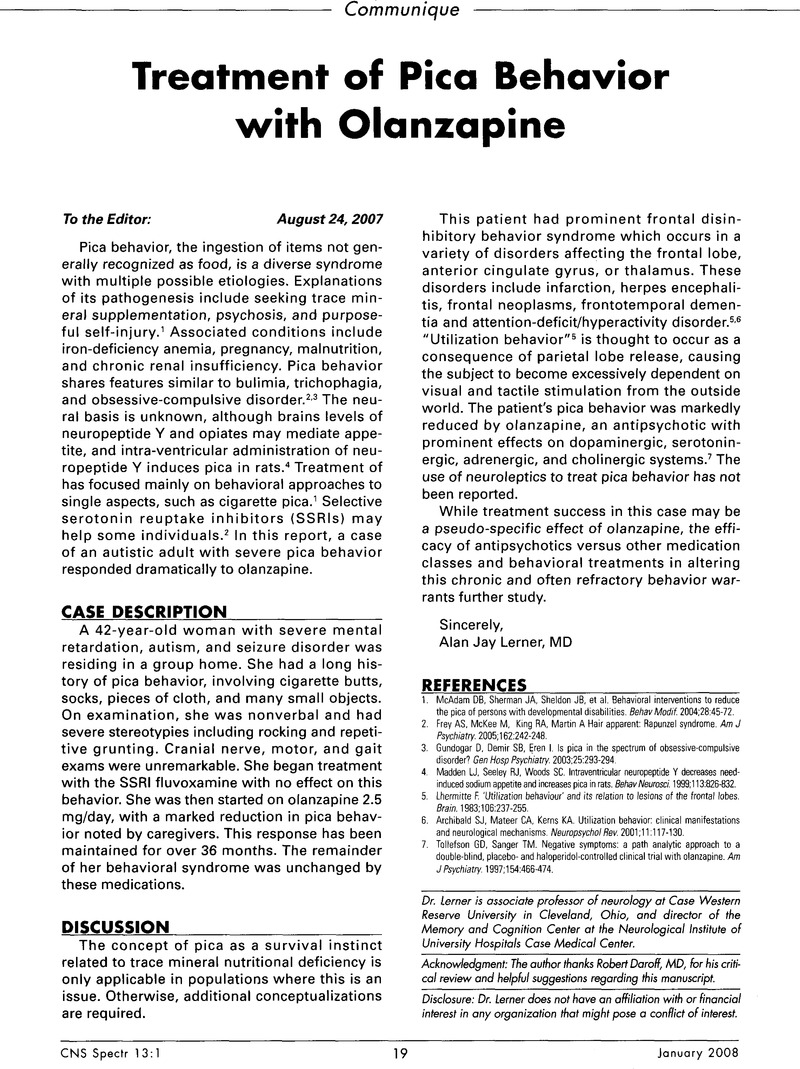Crossref Citations
This article has been cited by the following publications. This list is generated based on data provided by Crossref.
Furniss, Frederick
Biswas, Asit B.
Bezilla, Bradley
and
Jones, Aaron A.
2011.
International Handbook of Autism and Pervasive Developmental Disorders.
p.
437.
Tabaac, Burton J.
and
Tabaac, Vanessa
2015.
Pica patient, status post gastric bypass, improves with change in medication regimen.
Therapeutic Advances in Psychopharmacology,
Vol. 5,
Issue. 1,
p.
38.
2017.
Essential Clinical Guide to Understanding and Treating Autism.
p.
67.
Duncan, Deborah
and
Croft, Christine
2018.
A case study of an unusual incident of Pica.
Nurse Prescribing,
Vol. 16,
Issue. 4,
p.
180.
O’Brien, Matthew
2019.
Handbook of Intellectual Disabilities.
p.
607.
2021.
A Practical Guide to Autism.
p.
155.
Williams, Fionnuala
Gibbs, Susie
and
Addo, Ama S.
2022.
The assessment and management of pica in people with intellectual disability.
BJPsych Advances,
Vol. 28,
Issue. 6,
p.
383.



